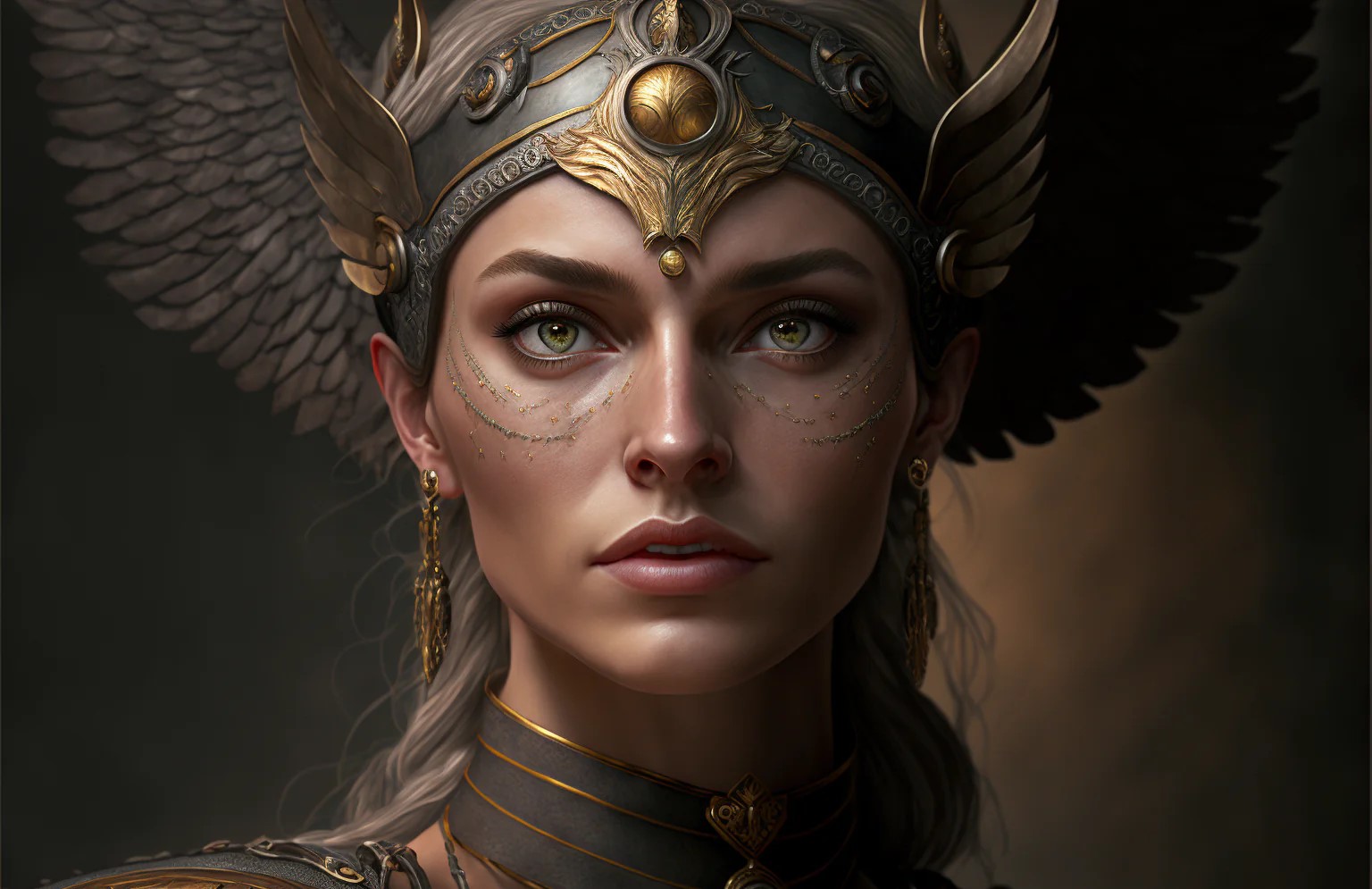Who were the Valkyries?
In Norse Viking Mythology, 'Valkyries' are female warrior servants of the God Odin. They appeared only to warriors who were about to die in battle.

In Scandinavian Mythology, Valkyries, who are depicted as soaring over the battlefields like birds of prey, were virgin heroines who, although they were dark spirits, that is, dark angels of death, took the souls of the heroes who died in battles to Valhalla.
In the early years, they were a kind of angelic horse Amazons, and according to Norse Mythology, they symbolized the encounter with fate for the martyrs by the order of Odin. They believed that the souls of those who died in battle were welcomed and carried to Valhalla by Valkyries, the female warrior servants of God Odin.
Odin gathers the heroes who died in battles in Valhalla to join his army on Ragnarok, the day of judgment determined by the gods. He will use the heroes he calls Etnherjar in the final battle between the gods and the frozen giants on the Vigrid Plains. All the heroes will die in that war. While Odin, with his positive and negative characteristics that contrast with each other, resembles Shiva, the destroyer and savior god of Indian mythology, it is noteworthy that his Valkyries resemble the Holy Virgins who accompany the martyrs in Indian Mythology.
In Norse mythology, a valkyrie is one of a host of female figures who guide souls of the dead to the god Odin's hall Valhalla. There, the deceased warriors become einherjar (Old Norse "single (or once) fighters"). When the einherjar are not preparing for the events of Ragnarök, the valkyries bear them mead. Valkyries also appear as lovers of heroes and other mortals, where they are sometimes described as the daughters of royalty, sometimes accompanied by ravens and sometimes connected to swans or horses.
Valhalla was the magnificent Palace of the Dead in Asgard. It was built as the home of the army of heroes gathered by Odin to fight in Ragnarok, the day of judgment predicted by the gods. The walls of the magnificent palace, a kind of Viking paradise, shine brightly with polished spears and shields.
Warriors spend time here on long benches decorated with shiny chains, drinking the never-ending wine offered by the Valkyries and eating meat. It is believed that the palace people, consisting of heroes gathered for centuries, were very crowded.
To feed such a crowd, the cook Andhrimnir cooks inexhaustible pork stew in a huge cauldron called Eldhrimnir.
Valkyries only appeared to warriors who were about to die during the battle, and when the warrior received the fatal blow and his soul was separated from his body, they rose to the skies, taking his soul with them. It was believed that the aurora shining in the sky were reflections from the shields and weapons of these female warriors who carried the heroes to Valhalla with their horses.
The fallen heroes were gathered together and transported to Odin's heavenly abode, Valhalla, to join his army.
In later periods of northern mythology, Valkyries became vassals and served inexhaustible drinks and meat to selected heroes in the palace of Valhalla.
In the following years, it was revealed in the Volsung Legend and Niebelungenlied that there were beautiful but sinful Valkyries such as Brynhild or Brunhild. For example, Valkyrie Brynhild resists Odin by aiding her heroic half-brother Siegmund. As punishment, Brynhild is condemned to sleep defenseless on a hill until she is summoned. Later, the god Odin's anger softened and he commuted the punishment by having him burned in a ring of fire guarded by the bravest hero.
Idealized Valkyries are much more vulnerable than their fiery and angry ancestors. Swan maidens, in particular, are at great risk because they can be trapped if caught in the world without their feathers.
Sometimes they even fall in love with mortal heroes. For example, Vakrrie Gudrun falls in love with the hero Helgi. When Helgi dies, Gudrun cries so much that the hero calls out from his grave and tells her not to cry anymore, because every drop of tear she sheds cauterizes her own wounds. The lovers meet when Helgi's soul ascends to Valhalla. Gudrun is gathering the dead to form the ghost army that Helgi will lead in Ragnarok.
Valkyries would glide onto the battlefield through hurricane clouds with their flying horses. Their pearl-coloured horses are made of rain clouds. They scatter dew and frost on the dry water-starved lands. Valkyries flying with their horses symbolize the irreversible, rapid power of fate and that death is the point that ends this world's life.
The Valkyrie is depicted with a horn of plenty in her hand, usually on the battlefield and sometimes to greet the chosen heroes who come to Valhalla. In the sixth century, Valkyries began to be depicted more gently, as Odin's benevolent maidens who gathered the dead and served heroes in Valhalla. Elegant maidens, with their golden hair collected and kept in a net, and their flowing dresses, graciously offer drinks to the brave warriors as an example of hospitality...
Marvel Comics
Valkyrie is a fictional superhero appearing in American comic books published by Marvel Comics. Based on the Norse mythological figure Brynhildr, the character was created by Roy Thomas and John Buscema. First appeared in Avengers #83 (December 1970); The main character of a superhero team known as the Valkyrie Defenders, she became Thor's short-lived love interest and a close ally.
